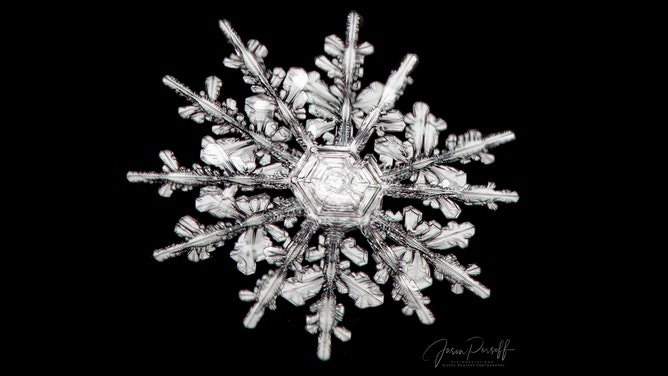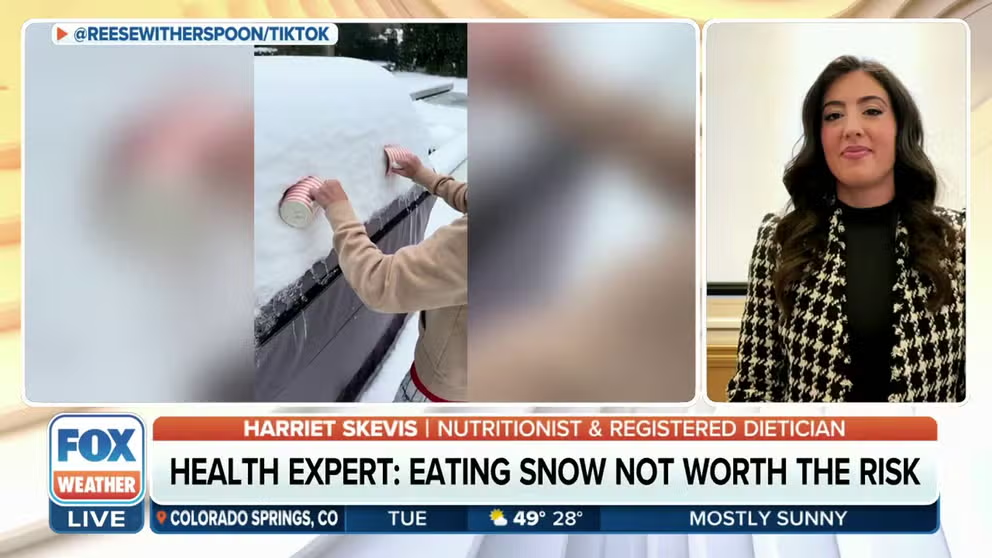Eating snow 'not worth the risk' of ingesting contaminants, health expert says
On one hand, snow benefits the air we breathe by filtering it of contaminants. However, when the snow lands on the ground, it brings along the contaminants it collected along the way.
Eating snow 'not worth the risk,' health expert says
Actress Reese Witherspoon’s viral TikTok of her eating snow has sparked a heated debate: Is it safe to eat snow? Harriet Skevis, Nutritionist and Registered Dietician at Northwell Health, joins FOX Weather to educate us on the potential hazards of eating snow.
Actress Reese Witherspoon recently caused a stir on TikTok when she showed how to make a wintry treat by using snow, chocolate syrup, salted caramel syrup and cold brew.
As delicious as the treat, which Witherspoon dubbed as "Chococinnos", sounds, the actress received pushback online concerning the hazards involved with eating snow.
While snow can be a delightful and, for some reason, a seemingly delicious part of winter, it turns out that snow may not be as delectable as it seems.
"It's not worth the risk, whether it be freshly fallen or on the ground," said Harriet Skevis, Nutritionist and Registered Dietician at Northwell Health. "We don't know if the air or the wind contains bacteria or contaminates. That could put our health at risk."
Why snow can be dangerous to eat

A closeup photograph of a rare 12-sided snowflake taken in Aurora, Colorado.
(Jason Persoff / StormDoctor.com / FOX Weather)
One of the reasons why snow should be avoided as a food item involves its role as one of nature’s air filters.
As snow forms in the clouds, it collects bits of dust and pollen, which forms ice crystals. Then as snow descends toward the Earth’s surface, it can collect small but measurable amounts of chemical contaminants in the air.
When the snow lands on the ground, it brings along the contaminants it collected along the way.
When a snowstorm begins, air pollutants are at their peak. These pollutants make the earliest snow to fall the least safe to consume.
In addition to the collected airborne pollutants, the first snow to fall is often in direct contact with the ground. This contact allows it to also absorb chemicals and molecules from the soil like dirt, animal waste, pesticides and fertilizers.
If the snow has been disturbed in any way, it is best to avoid eating. Snow plowed off the road or sidewalk should not be consumed.
You must also avoid eating snow that is discolored in any way, especially if it is yellow or brown.
Alternatives to eating snow

Woman catching snowflakes with mouth open.
(Beth Jnr / Unsplash / FOX Weather)
Skevis noted that the dangers of eating snow are particularly true for children who have poor or low immunity. While catching a few snowflakes on your tongue is harmless, eating large quantities of snow can be a health risk.
Side effects of eating contaminated snow include discomfort, such as a stomach ache, bloating and even diarrhea, Skevis added.
HERE IS WHY YOU SHOULD NEVER STORE FOOD IN THE SNOW DURING A POWER OUTAGE
Rather than using snow to create a sweet treat, she recommended using filtered ice that is shaved or crushed, which can be produced by some refrigerators. This ice can then become a canvas for your favorite topics, such as chocolate, fresh fruit or frozen yogurt.
